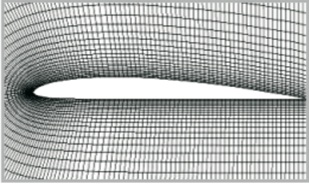Diseño de una hélice supercavitante
Keywords:
cavitation, computational shaping, cavitatorAbstract
For the design of the propeller of super-cavitations, we proceeded according to the proposal developed by Kudo et al. (2001), which was to stimulate the cavitations by making a groove on the side of the blade with the lowest pressure. To establish the location of the groove or cavitator and achieve the predetermined objective, computational simulations were carried out of the pressure distribution in the hydro-dynamic profiles along the blade. Once the zone was identified, two propellers were built, a conventional one and another with grooves for its later testing which would allow us to know the difference in behavior between them. The tests proved that the propeller with grooves presented an increase in efficiency, and therefore, in the thrust speed, with a noticeable shifting of the maximum efficiency towards higher angular velocities than those of the design.Downloads
References
Amromin, E. y Mizine, I. (2003, 1-4 de noviembre). “Partial Cavitation as Drag Reduction. Technique and Problem of Active Flow Control”. CAV2003, [simposio] Fifth International Symposium on Cavitation, Osaka.
Anderson, J. (1984) Fundamentals of Aerodynamics, New York, McGraw-Hill, pp. 247 – 314.
Batchelor, G. K. (2001) An Introduction to Fluid Dynamics. Cambridge, (s. e.), pp. 55, 481-506.
Berntsen, G., (2001 20-23 de junio). “Numerical Modeling of Sheet and Tip Vortex Cavitation With Fluent 5”. CAV 2001, [simposio] Fourth International Symposium on Cavitation, Pasadena.
Carey, V. P., (1992). Liquid–Vapor Phase–Change Pheno- mena, Bristol, Taylor & Francis, pp. 35, cap. 2.
Fuchslocher, S. (1964) Bombas. Madrid, Labor S. A., pp. 89 – 112.
Kinnas, S. (s. d.) “Photographs of Different Types of Cavitation”, [en línea], disponible en: http://cavity. ce.utexas.edu/kinnas/cavphotos.html, recuperado el 4 de octubre de 2005.
Kudo, T., Ukon, Y., y Sumino, Y. (2001, 20-23 de junio) “Proposal of a Groove Cavitator on a Supercavitation Propeller”, [simposio] Fourth International Symposium on Cavitation, CAV 2001, Pasadena.
Goel, A. (2002) Control Strategies for Supercavitating Vehicles, [tesis de maestría], Florida, University of Florida, Mechanical and Aerospace Engineering Department.
Houghton, E., Carpenter, P., (2003) Aerodynamics for Engineering Students, Oxford, Butterworth- Heinemann, pp. 200-209.
Senocak,I.,(2002,s.d.).“ComputationalMethodology for the Simulation of TurbulentCavitating Flows”. [conferencia], University of Florida, Florida.
Somers, D. M. (2005) “Effects of Airfoil Thickness and Maximum Lift Coefficient on Roughness Sensiti- vity”. Contrato DE-AC36-99-GO 10337. National Renewable Energy Laboratory, Pennsylvania State University.

Downloads
How to Cite
Issue
Section
License
The authors who publish in this Journal certify that:
- The work submitted for publication in The Ship Science and Technology journal, was written by the author, given that its content is the product of his/her direct intellectual contribution.
- All data and references to material already published are duly identified with their respective credits and are included in the bibliographic notes and quotations highlighted as such.
- All materials submitted for publication are completely free of copyrights; consequently, the author accepts responsibility for any lawsuit or claim related with Intellectual Property Rights thereof, Exonerating of responsibility to The Science and Technology for the Development of Naval, Maritime, and Riverine Industry Corporation, COTECMAR.
- In the event that the article is chosen for publication by The Ship Science and Technology journal, the author state that he/she totally transfers reproduction rights of such to The Science and Technology for the Development of Naval, Maritime, and Riverine Industry Corporation, COTECMAR.
- The authors retain the copyright and transfer to COTECMAR the right of publication and reproduction of the work which will be simultaneously subject to the Creative Commons Attribution License (CC -BY) , which allows the license to copy, distribute, display and represent the work and to make derivative works as long as it recognizes and cites the work in the manner specified by the author or licensor.
- For more information about the Creative Commons Attribution License (CC -BY) and his use and scope, please visit the following web page https://creativecommons.org/licenses/by-sa/4.0/legalcode








